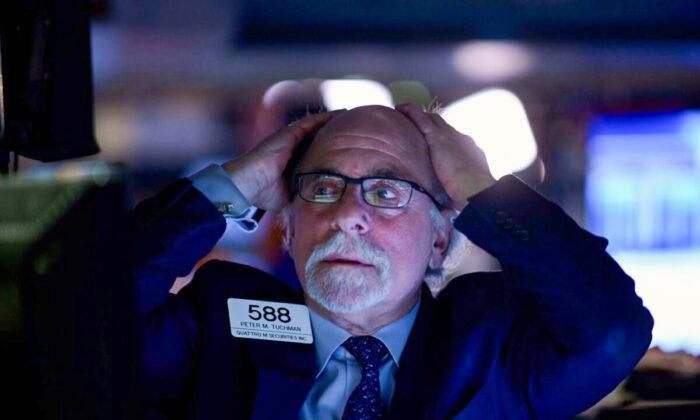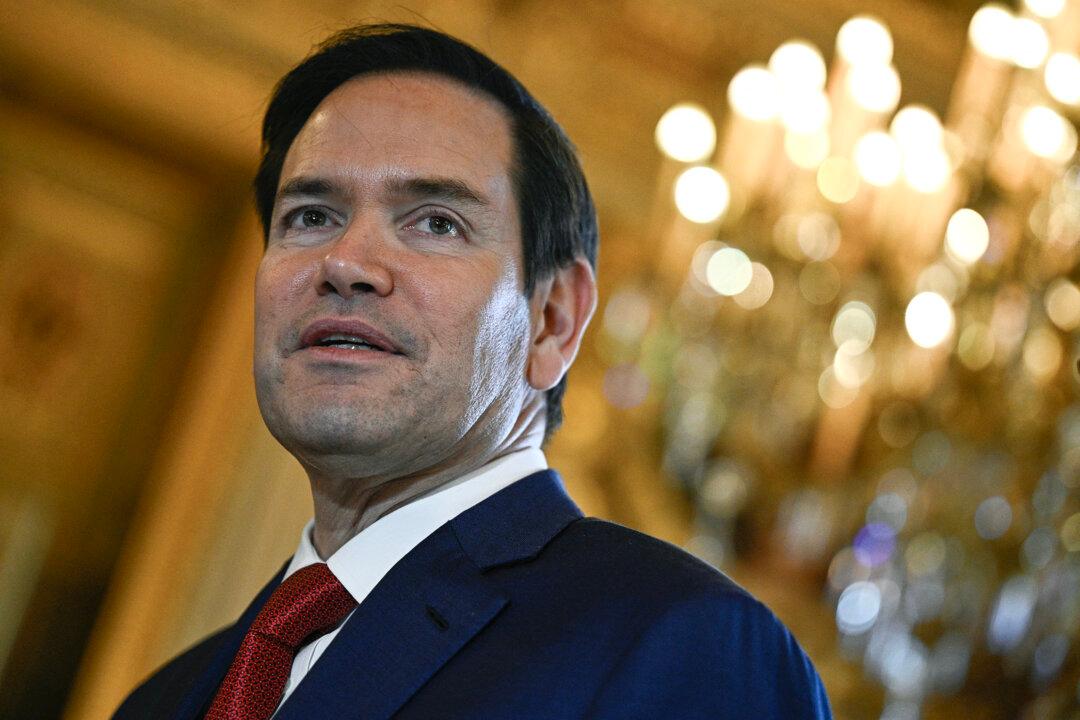Wall Street’s main stock indexes plunged on Sept. 13 after government data showed inflation coming in hotter than expected, putting investors on edge as the price data suggest the Federal Reserve will remain on a hawkish tilt and keep tightening aggressively.
The annual inflation rate, as measured by the Consumer Price Index (CPI), clocked in at 8.3 percent in August, according to the Bureau of Labor Statistics (BLS).
While the pace of inflation was lower than July’s figure of 8.5 percent, it was above market predictions of 8.1 percent.
Stocks dove following the release of the red-hot inflation data. The Dow Jones Industrial Average lost 1,276 points, or 3.94 percent on Tuesday, its worst day since June 2020. The Nasdaq composite dropped 632 points, or 5.16 percent and the benchmark S&P 500 Index fell 177 points, or 4.32 percent.
Republicans blamed President Joe Biden’s policies for the blistering pace of inflation, which has eclipsed Americans’ wage gains and eroded their purchasing power.
Noteworthy in the inflation data was a sharp acceleration in the core inflation rate, which strips out food and energy and is a measure of underlying inflationary pressures. The core Consumer Price Index (CPI) rose 6.3 percent last month, which was above consensus forecasts of 6.1 percent.
On a monthly basis, headline CPI advanced 0.1 percent, while the core CPI jumped 0.6 percent.
“The August CPI is a reminder that we don’t always get what we want. Whether looking at the month-over-month 0.6 percent rise in the core (excluding food and energy), or the outsized gains in the year-over-year measures, these numbers represent pricing pain for consumers and pressures for businesses trying to manage through them,” Bankrate Senior Economic Analyst Mark Hamrick told The Epoch Times in an emailed statement.
Fed to Remain on Hawkish Track
Hamrick joined other analysts in predicting that the forecast-beating inflation numbers mean the Fed has more work to do to quell price pressures and will likely stay hawkish for longer.“The Federal Reserve looks at the August CPI and likely remains on track for another large rate hike at the upcoming September meeting. An added consideration is the next rate hike may well not yet be the last, taking the benchmark rate farther into restrictive territory,” Hamrick said.
“Clearly this outcome throws out any talk of the Fed potentially surprising with a 50 basis-point hike next week, but it isn’t calamitous enough to see a big push for 100 basis points,” ING analysts said, adding that they’re sticking to their earlier predictions for a 75 basis-point hike.
Tuesday’s inflation print has also boosted market expectations for the terminal fed funds rate to a range of 4–4.25 percent. That’s up from the range of 3.75–4 percent before the inflation data were released.
Still, ING analysts believe there are “strong reasons” for inflation to drop sharply going forward, including continued Fed tightening and a slowing economy.





